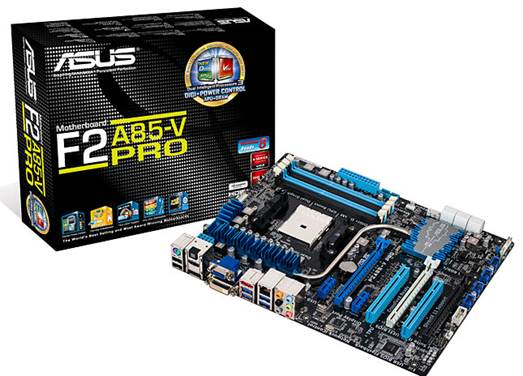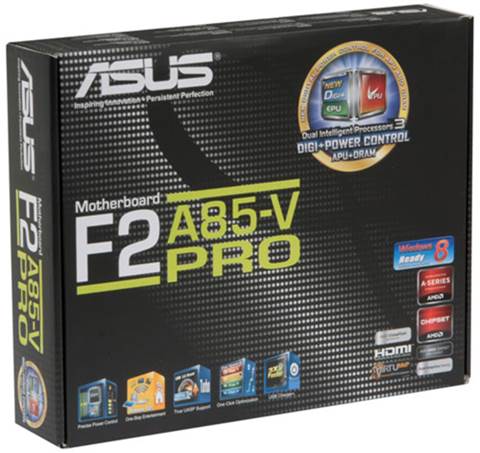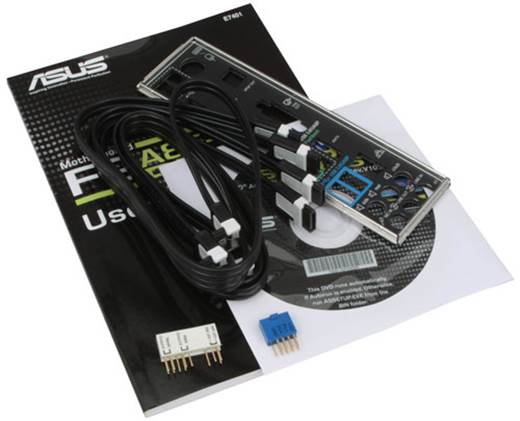This mainboard looks great, convenient to
use, provides multiple functions and high efficiency. However, its price is
relatively high price and it's not a power saving mainboard. It actually has
some pros and a few cons, which we will announce in this review.
We started a new evaluation series
dedicated to to mainboards on AMD A85X chipset for Socket Fm2 processors with a
not so traditional article called "" FM2 Platform: Gigabyte
GA-F2A85X-UP4 Mainboard and AMD A10-5800K Processor Review”. Indeed, the
discussing part of the mainboard is actually quite common. Well, we have
started using the new Microsoft Windows 8 operating system, partially updated
the benchmark list, but nothing really changes in the overall perspective. The
uniqueness of this paper is largely dedicated to the specifics of the new
platform and AMD A10-5800K processor. We were disappointed that in the nominal
mode the system consumes about the same amount of power a testbed with one of
the LGA 1155 mainboards and an Intel Core i5-3570K processor offering
incomparable performance. An even more shocking discovery was lying ahead. It
turns out that a Socket FM2 platform might consume much more energy.

This
mainboard looks great, convenient to use, provides multiple functions and high
efficiency.
We decided to figure out which of the
platform components is the one to blame for making it some incredibly
energy-inefficient and which one contributes the most to the performance
increase. There is a well-known fact that AMD processors are not the best in
terms of power consumption and performance rate, so it's not surprising that
computing cores bear the principal responsibility for the high system power
consumption. AMD A10-5800K overclocking boosts the computing cores performance,
but not dramatically, because its nominal frequencies are set at very high
values to start with. At the same time, the graphics performance of gaming and
other applications did not increase, while the overall electricity consumption
increased rapidly.
The experiments with the graphics core
integrated into the processor generated interesting results. It turns out that
the increase in its clock frequency and not CPU overclocking that determines
the increase in the system power consumption in idle mode. In addition,
overclocked graphics core can negatively affect performance of computing tasks,
although this negative effect is small and can be ignored completely. However,
it was quite disappointing that graphics core overclocking doesn’t serve its
true purpose effectively - to ensure the performance boots in gaming and
graphics applications. The acceleration proved to be minimal and could only be
noticed in diagrams and tables, but not during the actual system operation.
However, the main feature here is turned
out to be the memory. All of our previous reviews showed that faster memory
systems have very little impact on system performance. This is rule that cannot
be broken, applies to all platforms no matter what their function is and who is
the manufacturer. We investigated whether it made sense to select faster memory
for LGA 1156 Clarkdale processors, which memory was the best for Socket AM3
Phenom II X6. We compared the modules for LGA 2011, and which modules will be
the best choice for LGA 1155 processors. Specific recommendations can vary, but
the general conclusions remain the same: one does not ignore high-speed memory,
but it would be wrong to overestimate its potential. Why has everything
suddenly changed for a Socket FM2?
First, I cannot say that all of them have
changed, because new platforms weren't developed from scratch and therefore
inherited some aspects from the previous systems. The performance obtained from
from using high-speed memory is often quite small and specific numbers in most
case depends strongly on the type of load created by the application. The gain
is barely noticeable in computing-intense applications, more noticeable during
data archiving, but most of the potential can be unveiled only in graphics
applications. The problem is the graphics core uses a portion of memory for
video memory operation and its high speed provides this phenomenal performance
boost. Specifically, the speed was pumped up at least one third when the memory
frequency changes from 1333 MHz to 1867 MHz. It is extremely important that
despite the significant increase in performance, the power consumption does not
increase at all.
Despite the generally positive feedback
that Socket FM2 platform has received, we are quite disappointed with the AMD
A10-5800K. Substantial power consumption and low computing power are definitely
not the features to be proud of. However, we do not really have high
expectations in this regard, but just hope that the relatively powerful
graphics core would outweigh the shortcomings and make it look good. True,
integrated AMD Radeon HD 7660D graphics is quite capable of replacing a
discrete graphics accelerator for new users, which will help you build a
inexpensive non-gaming, which still can be used for occasional gaming. However,
this system will never become a fully functional gaming platform because its
graphics sub-system is not powerful enough to satisfy the needs of modern 3D
games, even at the lowest resolution and with the minimal image quality
settings.
Now we know all this, we can proceed with a
more traditional mainboard review. Asus mainboards have long been a major
competitor to Gigabyte's products, therefore our choice of the next review
subject was actually quite predictable. Gigabyte GA-F2A85X-UP4 mainboard is the
top model in the line of Gigabyte's Socket FM2 that is why for the sake of a
fair comparison we selected Asus F2A85-V PRO mainboard, which tops the FM2
series of Asus products.
Packaging and accessories
Like in the case of Gigabyte's packaging,
the box with Asus F2A85-V PRO is easy to identify
because of typical design and colors. The company used the same packaging
design for all products except the "Republic of Gamers" and "The
Ultimate Force" series, which also have unified design across the series,
but with different distinguishing characteristics and color choices.

The
box with Asus F2A85-V PRO is easily regconizable.
On the front of the box, we can find a
large Asus F2A85-V PRO model name and an array of icons and logotypes
indicating the board’s functionality and supported technologies. There is a
mainboard picture on the back of the box with a list of its specs and a short
description of the main functions and features. The mainboard inside the box
is packed in an anti-static pouch and all accessories are arranged underneath
it and are separated with a cardboard divider:
·
Four Serial ATA cables with metal L-shaped
connector locks. The ones specifically designed for SATA 6 Gbps devices have white
inserts in the connectors
·
I / O Shield for the back panel
·
“Asus Q-Connector” kit including adapters for
easy connection of the system case front panel buttons and indicators and a USB
2.0 port
·
User manual
·
DVD with software and drivers

Accessories
It is not surprising to see no plastic
carry handle or a colorful flip-cover on the front of the box. Supplied
accessories are also modest, which we expect to see. Mainboard for Socket FM2
processors cannot be too expensive and therefore, we can’t consider this
thriftiness to be a drawback, more like an advantage.